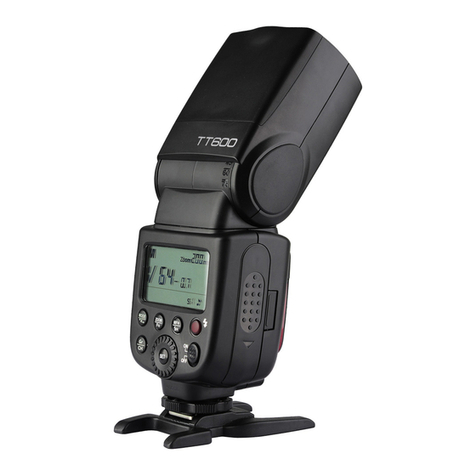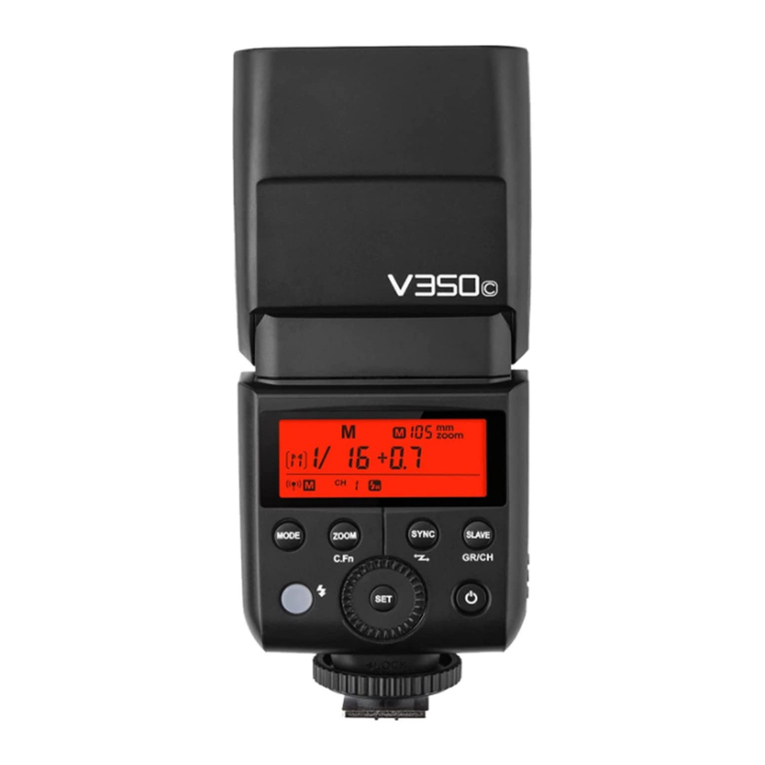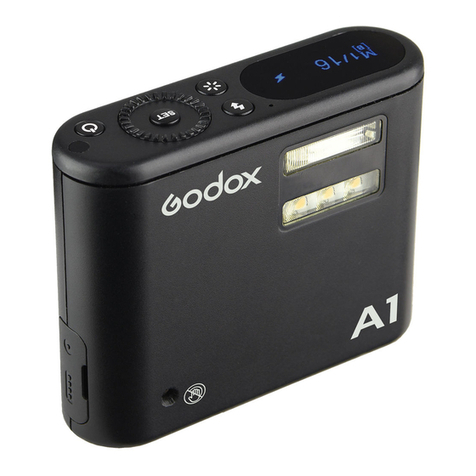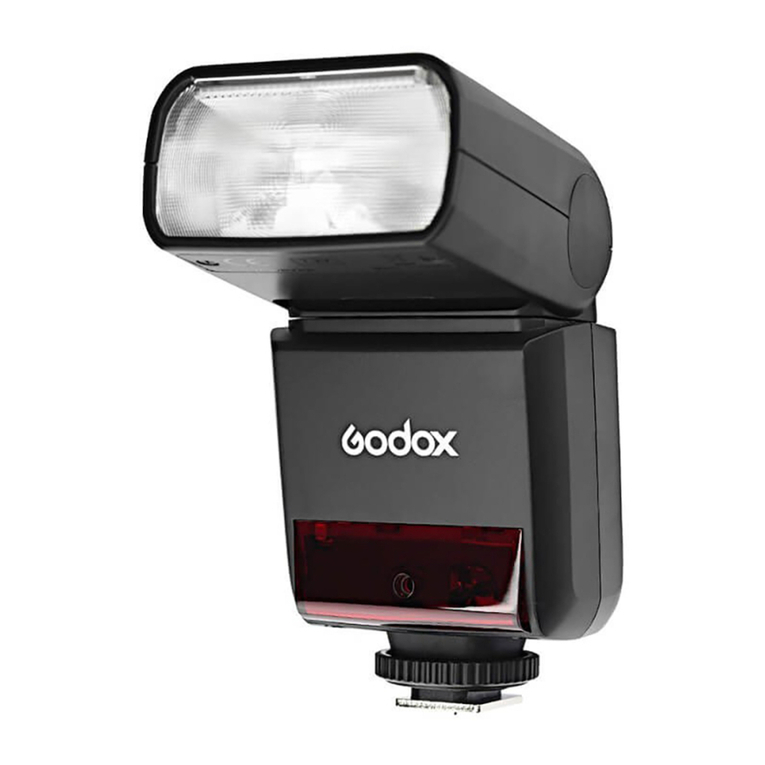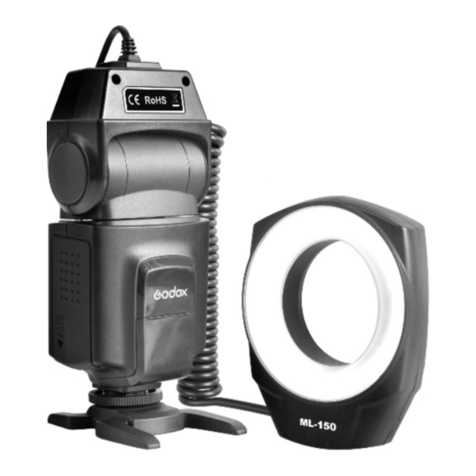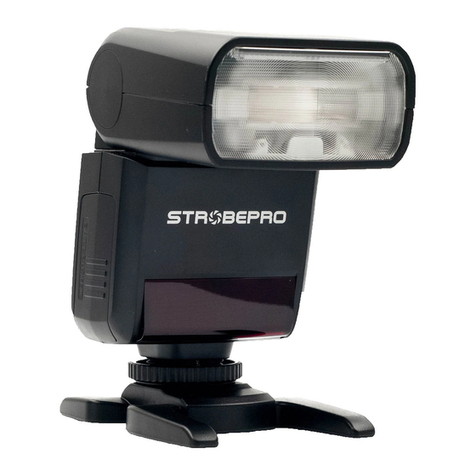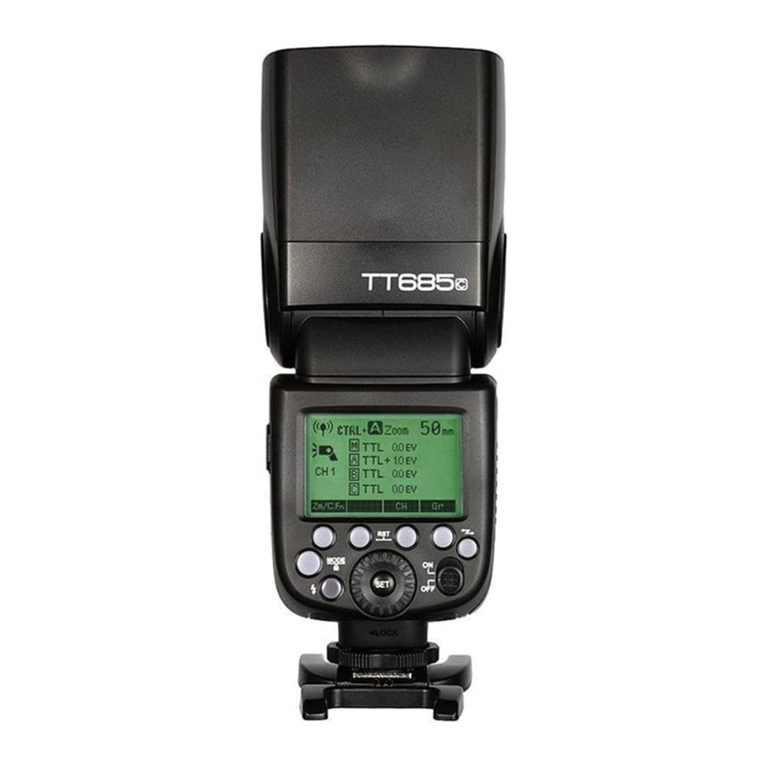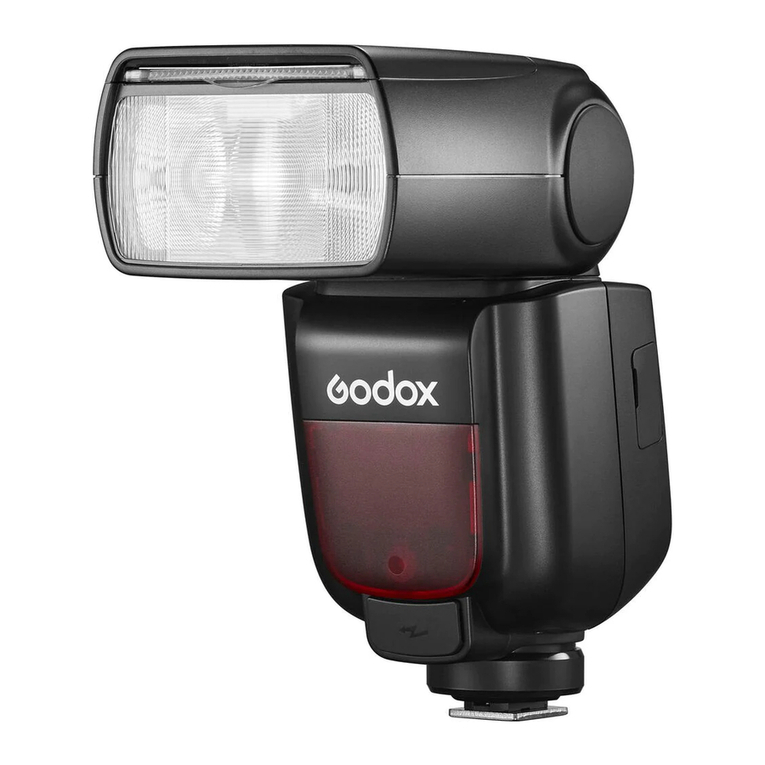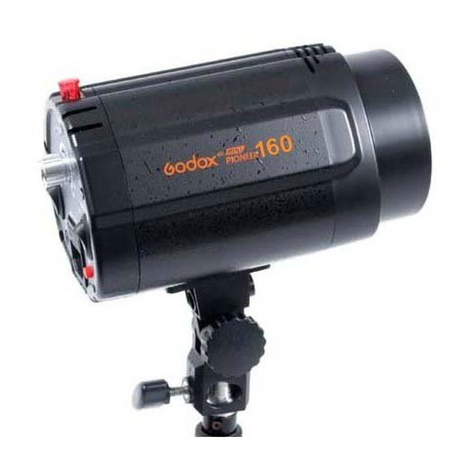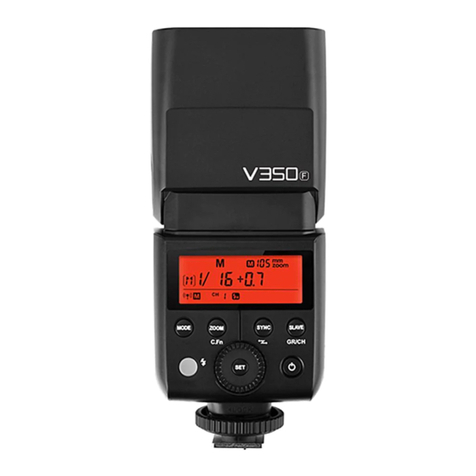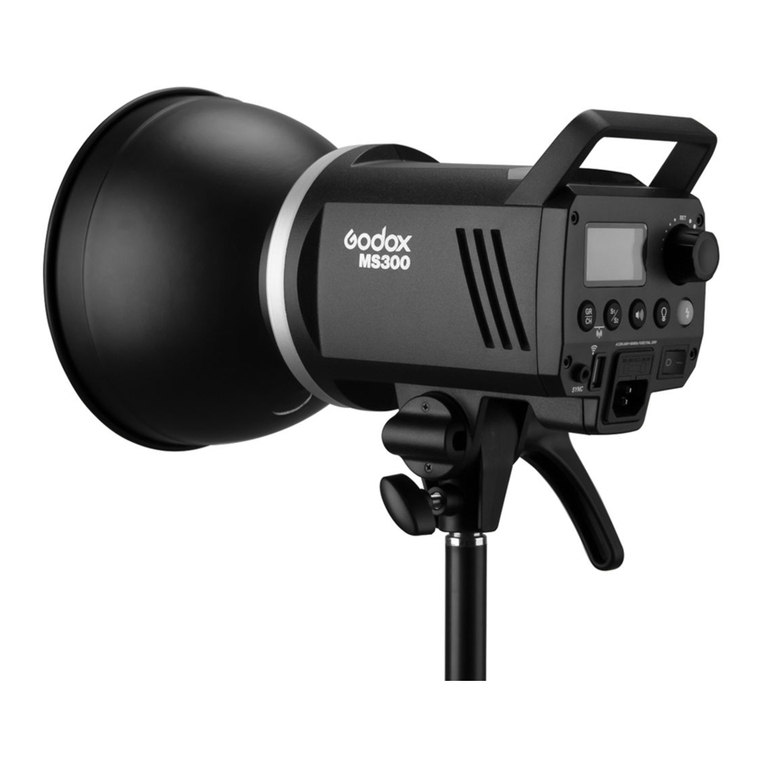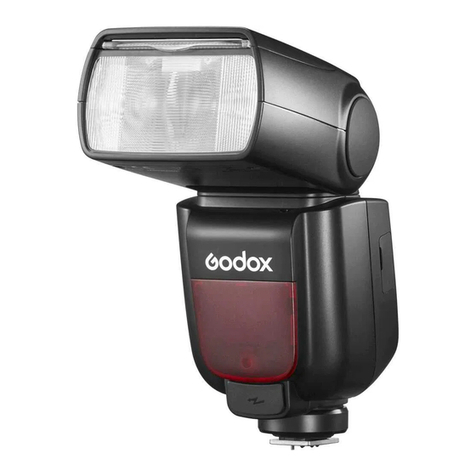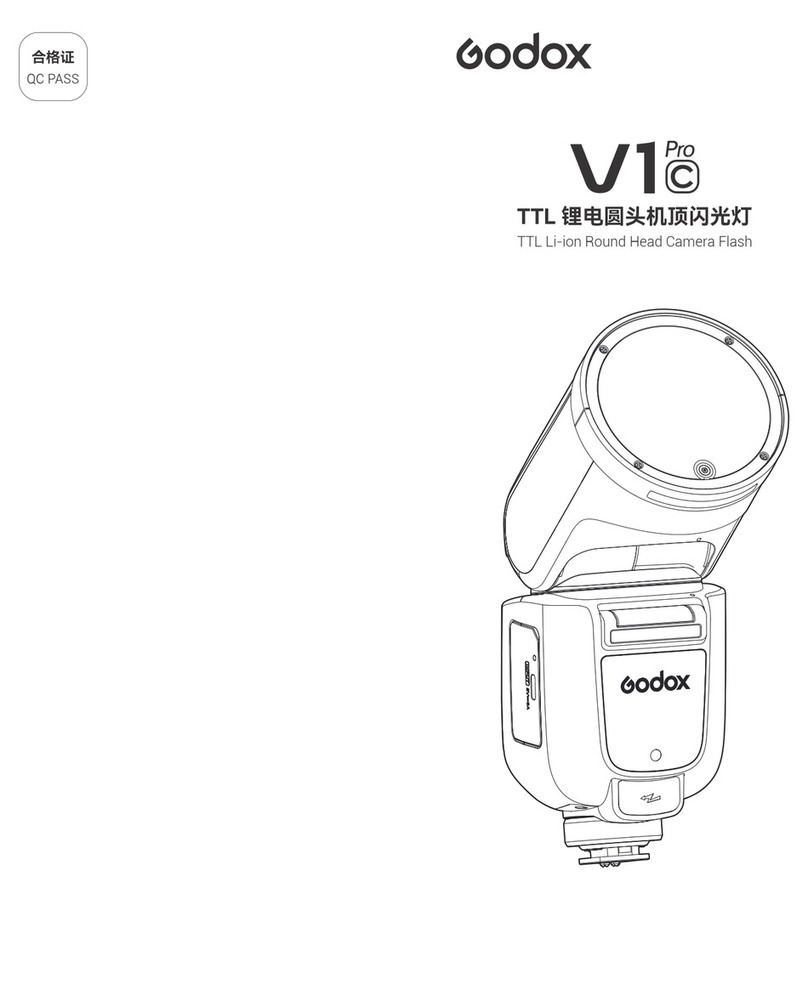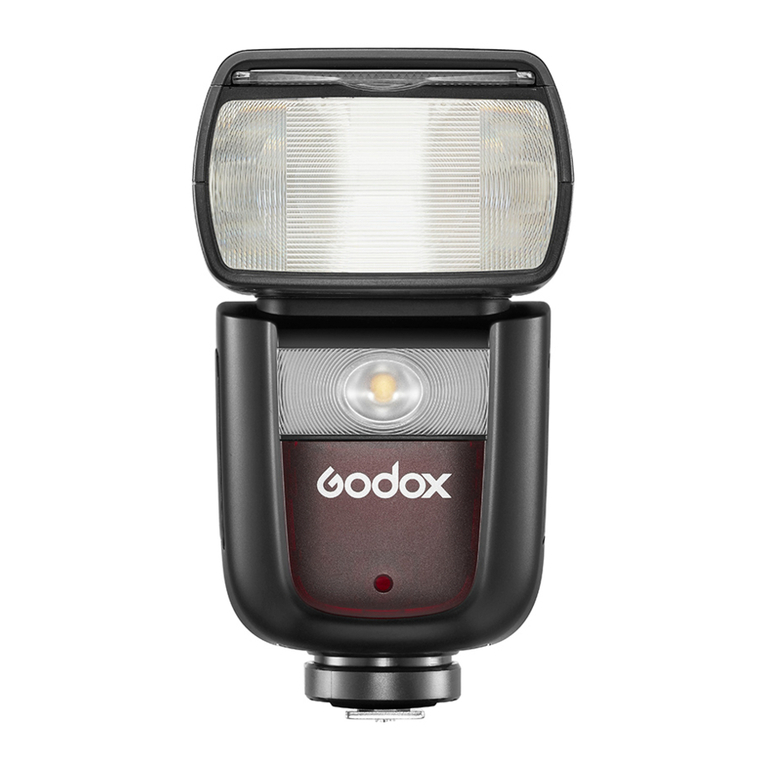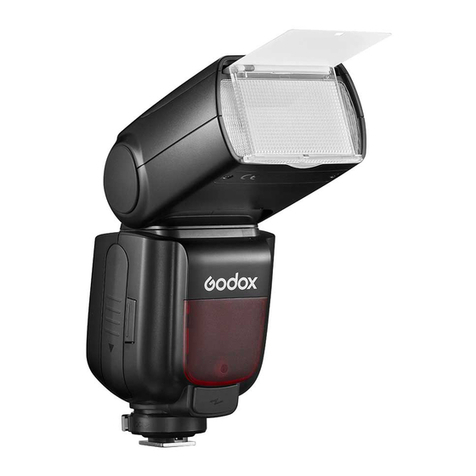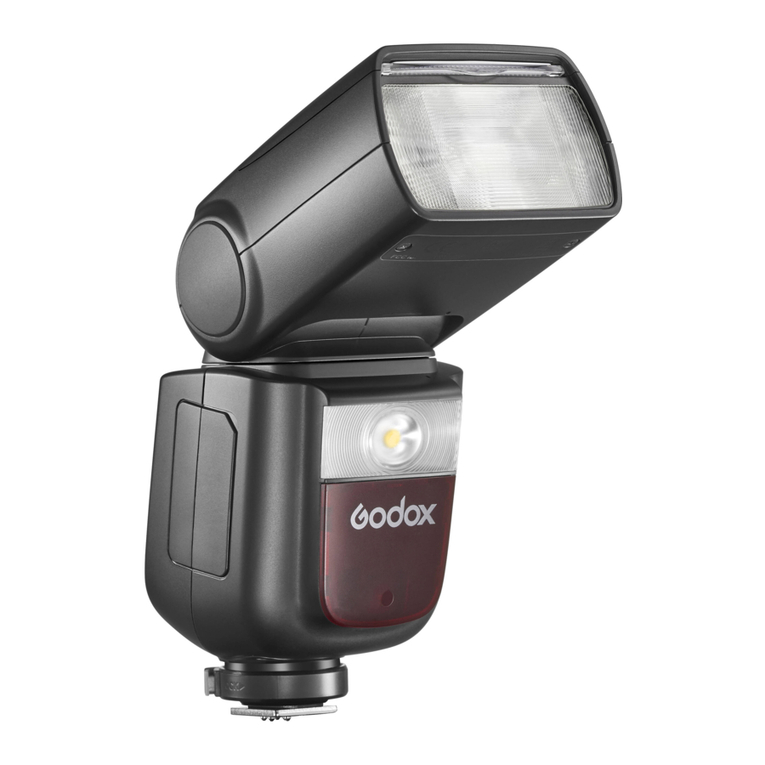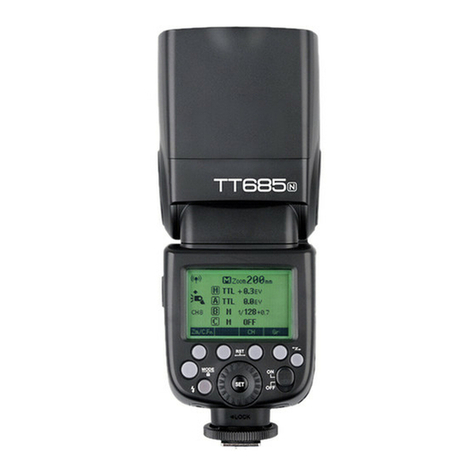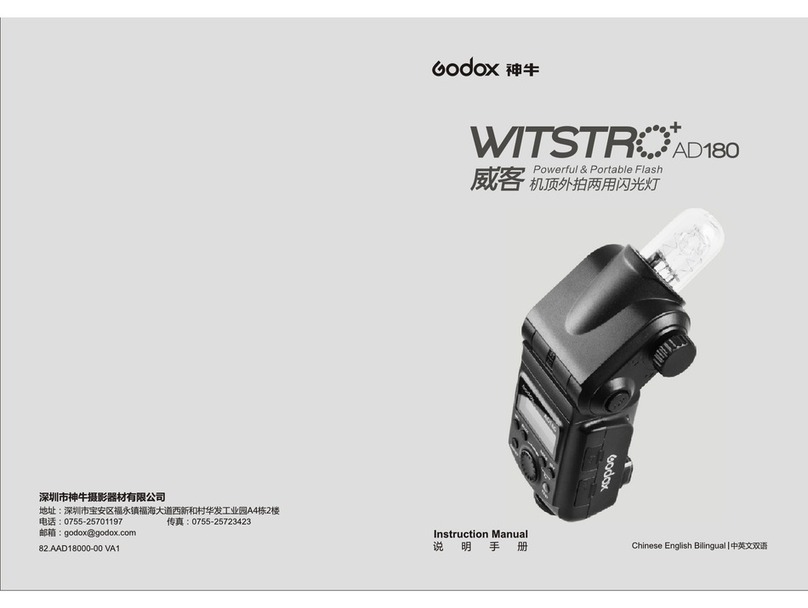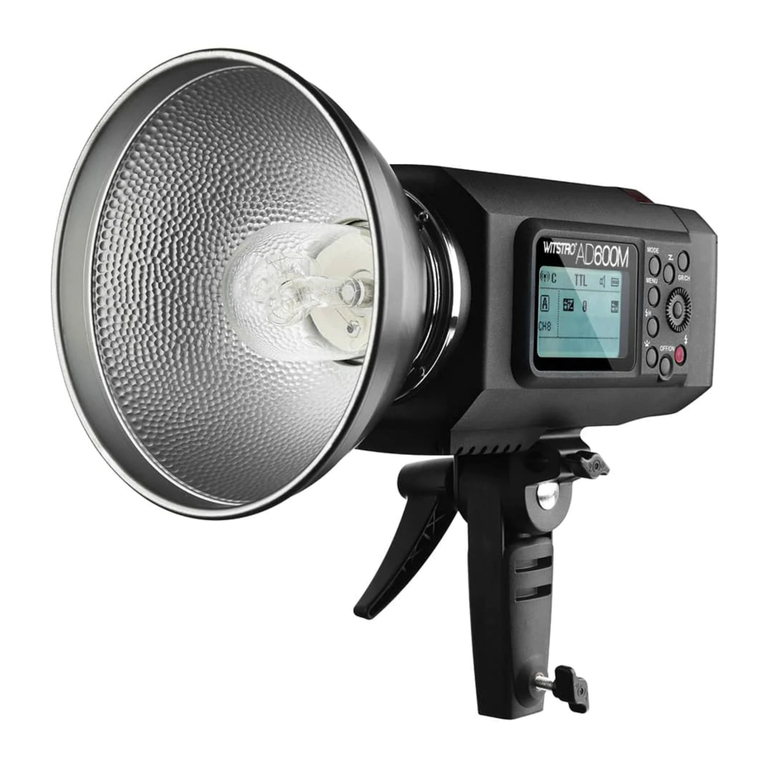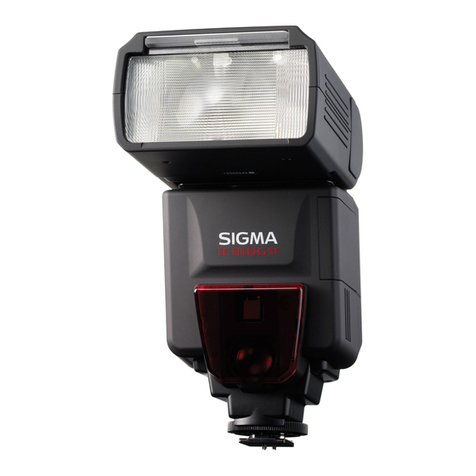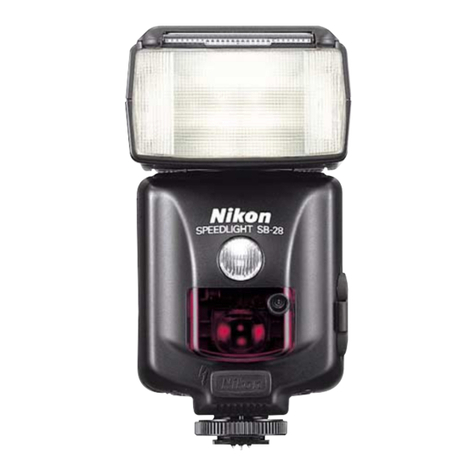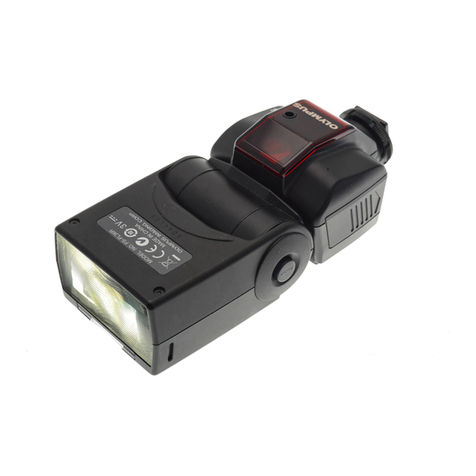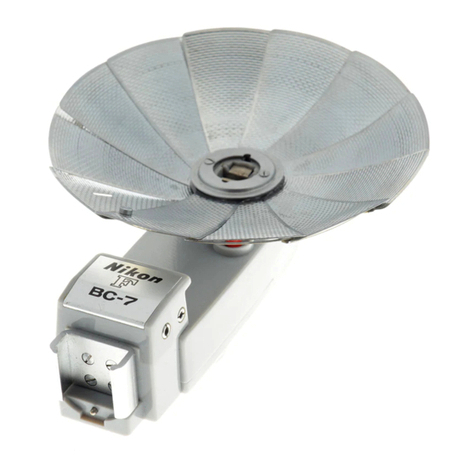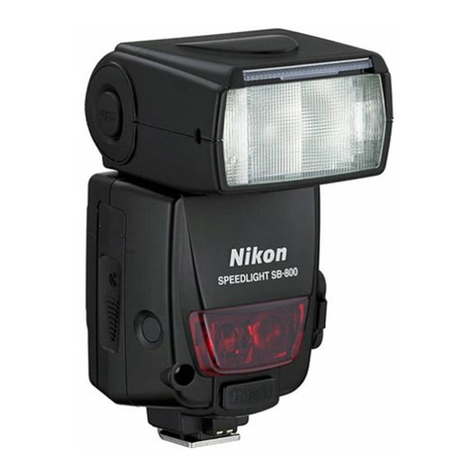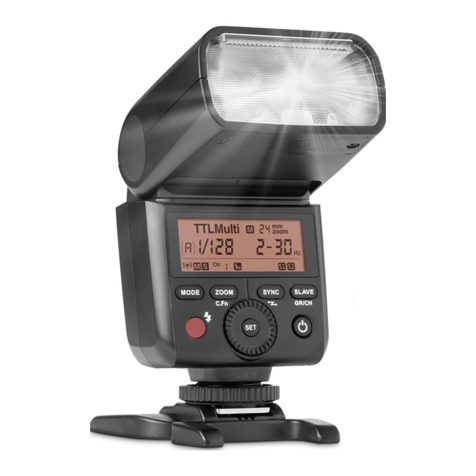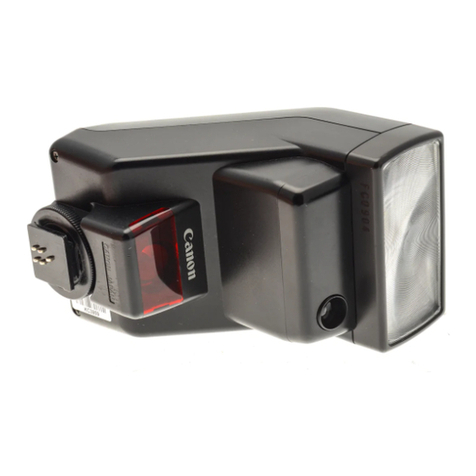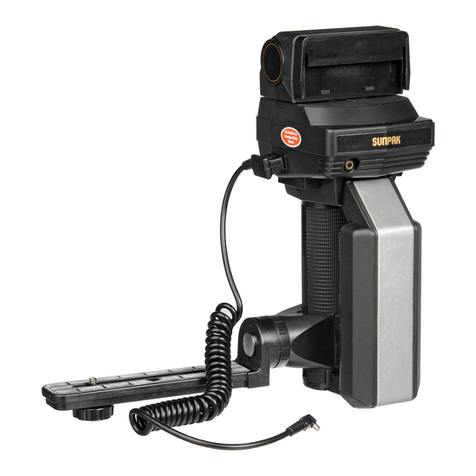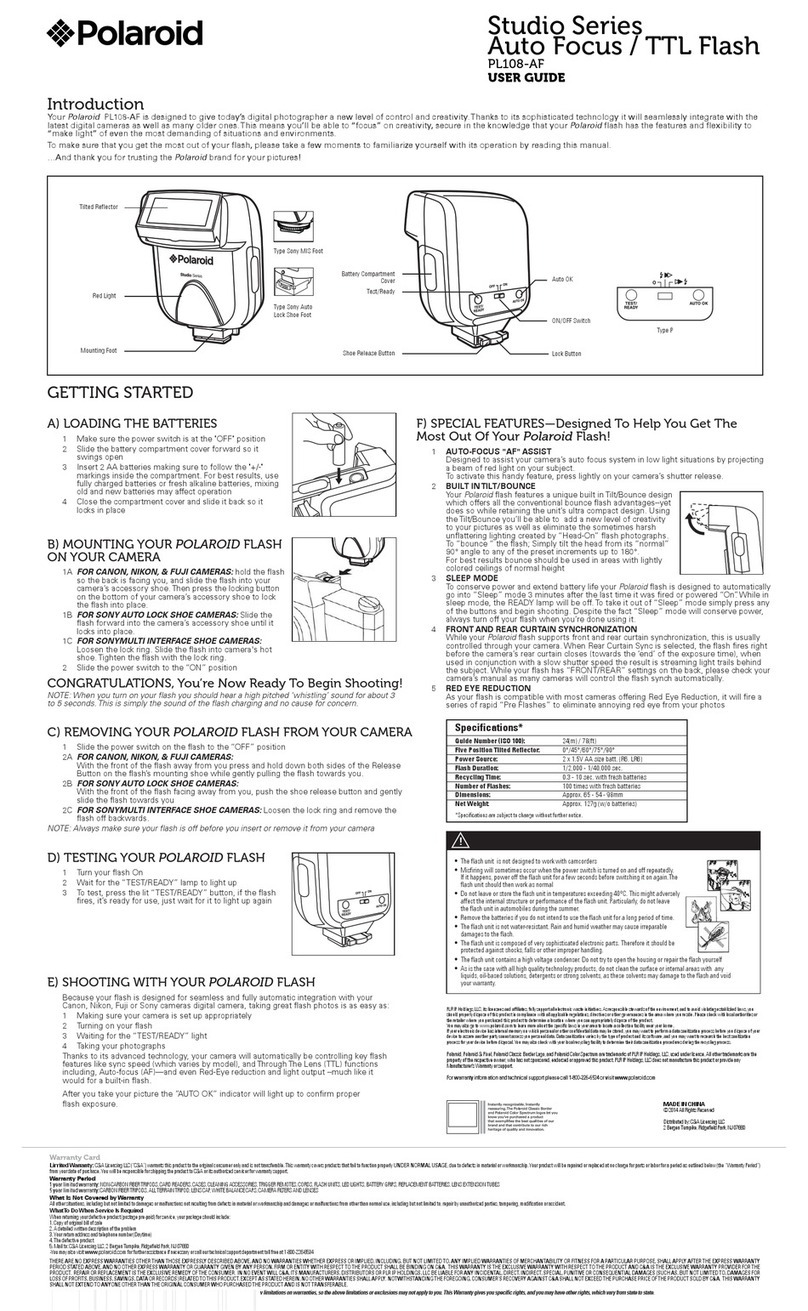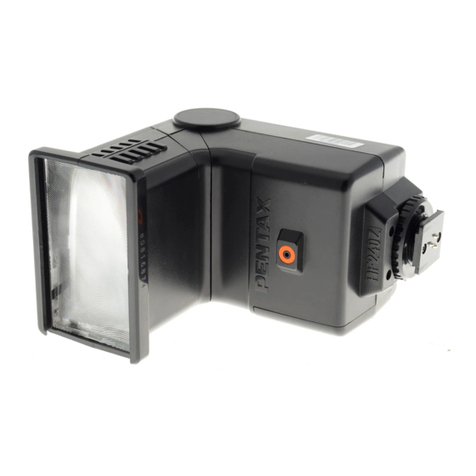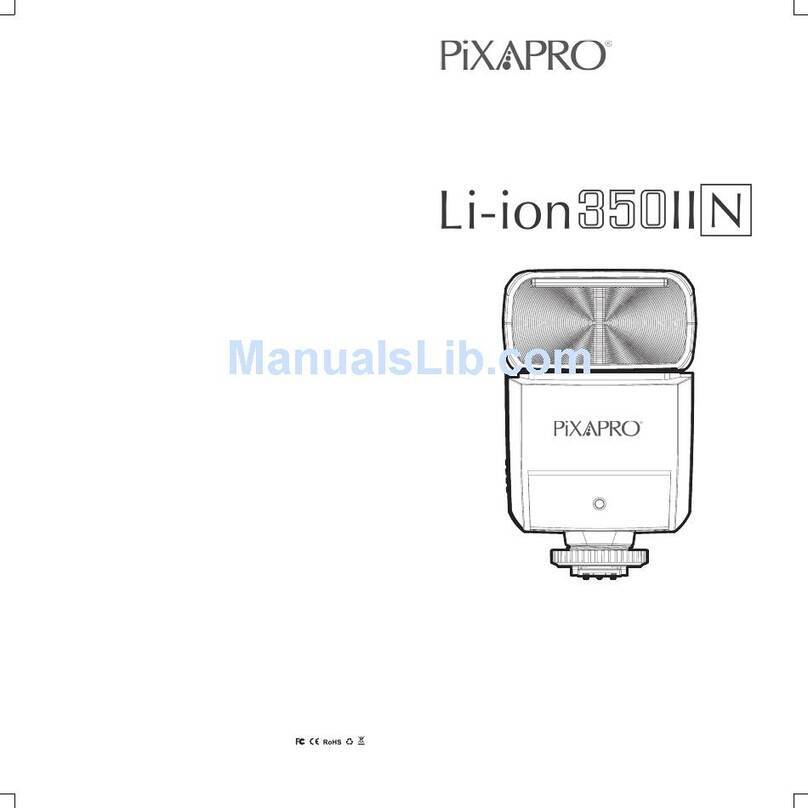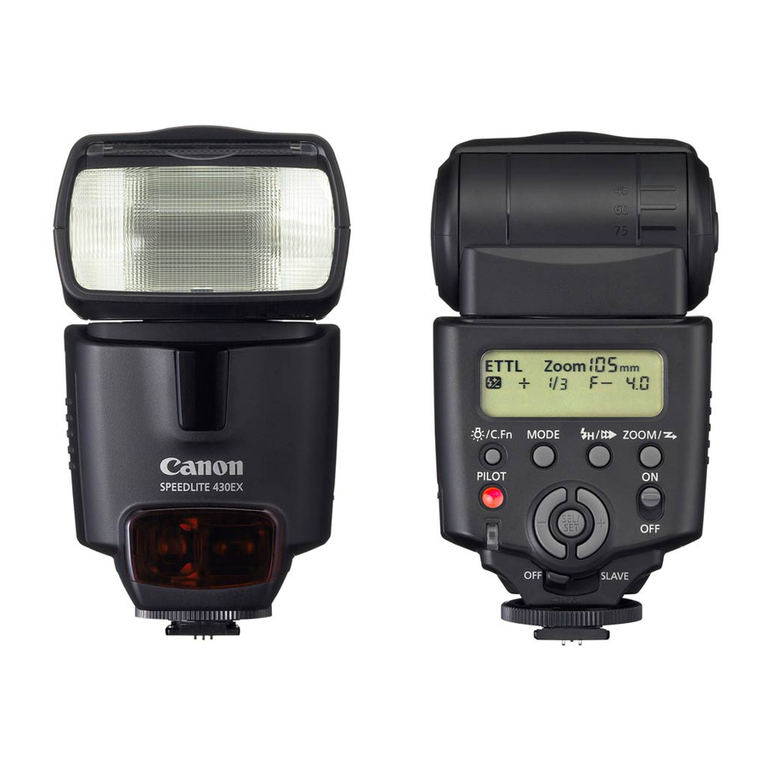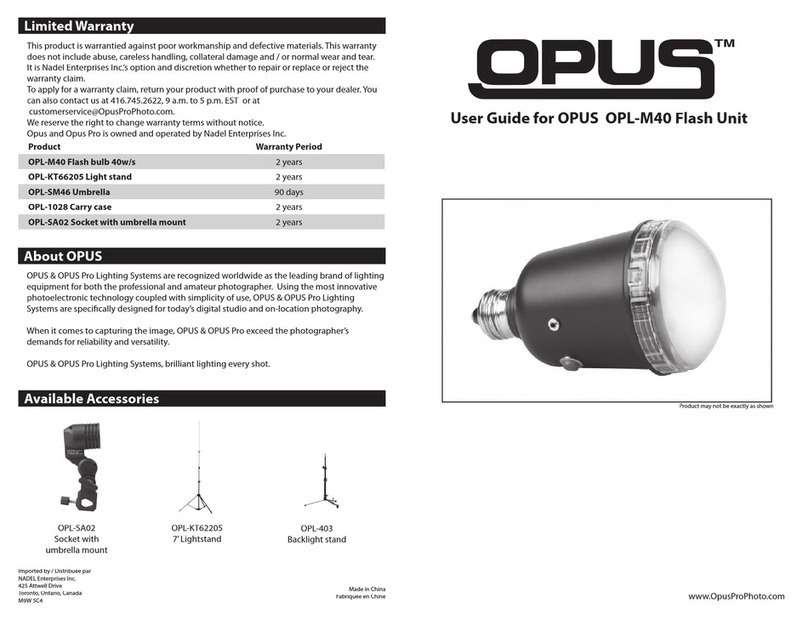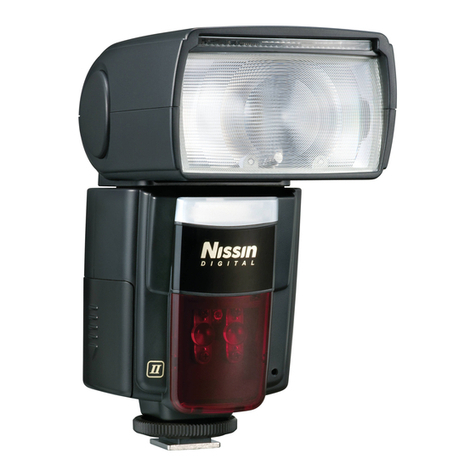Before using this product
Please read this user manual carefully in order to ensure your safety and the proper operation of this product. Keep
for future reference.
Thank you for purchasing a GODOX product.
WITSTRO TTL Powerful & Portable Flash AD360II-C adopts Godox 2.4G wireless X system。When using on the
camera, AD360II-C is suitable for Canon EOS cameras; when using Godox 2.4G wireless X system off camera,
AD360II-C is compatible with Canon E-TTL II autoflash, Nikon i-TTL autoflash, etc. With master & slave functions,
AD360II-C can also use in combination with Godox TTL camera flashes, TTL outdoor flashes, TTL studio flashes,
etc. With this AD360II-C flash, your shooting will become simpler. You can easily achieve a correct flash exposure
even in complex light-changing environments.
WITSTRO AD360II-C flash system is an AD360II-C flash with a bare tube, external power pack, wireless manual
power control, and a range of dedicated light shaping accessories. AD360II-C is 5 to 7 times powerful as typical
hotshoe flashes with the size and weight alike. It offers studio quality light for outdoor and live shooting. The
AD360II-C offers:
Compatible wireless TTL system: Fully support Canon E-TTL II, Nikon i-TTL and other TTL systems in Godox
2.4G wireless X system. Workable as Master or Slave unit in a wireless flash group.
Dot-matrix LCD panel: with clear and convenient operation.
Built-in 2.4G wireless transmission: with all-in-one functions and 100 meters further transmission with X1 TTL
wireless flash trigger.
Studio quality light: up to 360Ws, GN 80 (m ISO 100, with AD-S2 standard reflector) . One AD360II-C can
overpower the sun.
External battery pack: PB960 (lithium, 10.8V/5800mAh), 0.05-4.5s recycling and 450 full power flashes.
Lightweight and portable even with power and accessories
Wireless control: With built-in Godox 2.4G wireless X system to achieve TTL control. Godox FT-16 flash trigger
can also be used to wirelessly adjust flash power level and trigger the flash. AD360II-C has 3.5mm sync cord
jack and PC sync socket to achieve various sync triggering mode.
Wide-range accessories: softbox, beauty dish, snoots, color gels, etc. All lighting accessories fit for barebulb
flashes from most brands.
Power adjusts from full power to 1/128 in 1/3 stop increments
Stable color temperature at 5600±200K over the entire power range
1/8000s high-speed sync flash, Focus-assist beam on/off & high-speed sync triggering
The powerful and portable AD360II-C meets the demands of freelance commercial photographers, photojournalists,
wedding and beach portraiture shooters, event and backpack photographers, photograph enthusiasts, etc.
Foreword
- 31 - - 32 -
Always keep this product dry. Do not use in rain or in damp conditions.
Do not disassemble. Should repairs become necessary, this product must be sent to an authorized
maintenance center.
Keep out of reach of children.
Stop using this product if it breaks open due to extrusion, falling or strong hit. Otherwise, electric shock may
occur if you touch the electronic parts inside it.
Do not fire the flash directly into the eyes (especially those of babies) within short distances. Otherwise visual
impairment may occur.
Do not use the flash unit in the presence of flammable gases, chemicals and other similar materials. In certain
circumstance, these materials may be sensitive to the strong light emitting from this flash unit and fire or
electromagnetic interference may result.
Do not leave or store the flash unit if the ambient temperature reads over 50°C.Otherwise the electronic parts
may be damaged.
Turn off the flash unit immediately in the event of malfunction.
Warning
